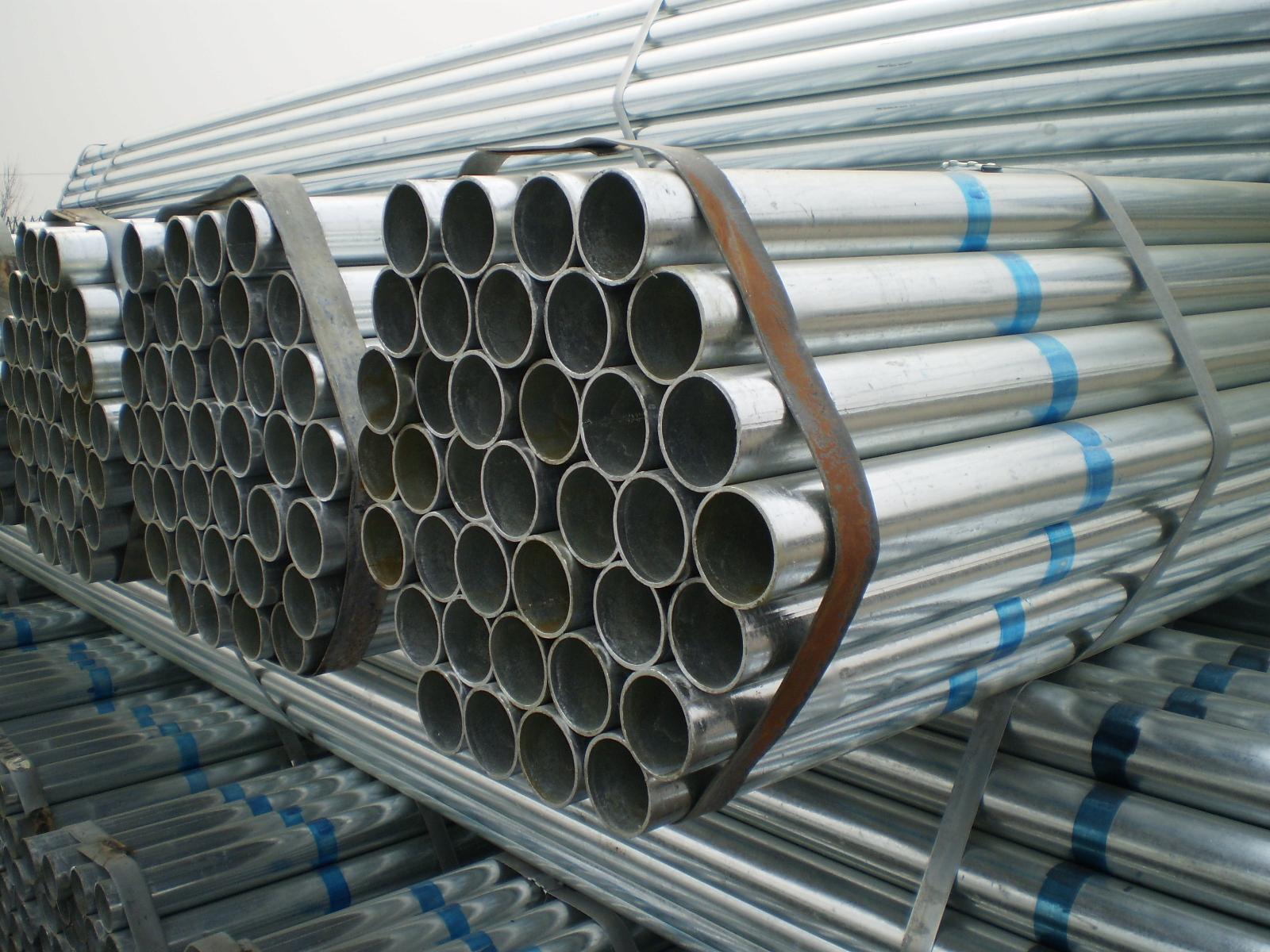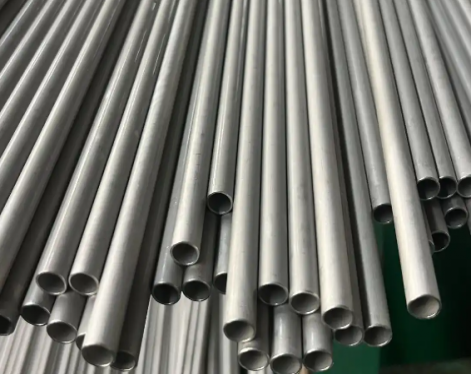Galvanized pipe, also known as galvanized steel pipe, is divided into two types: hot-dip galvanized and cold-dip galvanized pipe. Hot-dip galvanized galvanized layer is thick, and has the advantages of uniform coating, strong adhesion and long service life. The cost of cold-dip galvanized pipe is low, the surface is not very smooth, and its corrosion resistance is much worse than that of hot-dip galvanized pipe.
1. The essential difference between hot-dip galvanized and cold-dip galvanized pipe
(1) Cold-galvanized pipe is also called electro-galvanized pipe. It is to use electrolysis equipment to put the workpiece into the solution composed of acid salt after degreasing and pickling. And connect the negative pole of the electrolysis equipment, place a zinc plate on the opposite side of the steel pipe and connect it to the positive pole of the electrolysis equipment, turn on the power, use the directional movement of the current from the positive pole to the negative pole, and a layer of zinc will be deposited on the steel pipe.
(2) Hot-dip galvanized pipe is also called hot-dip galvanized pipe, which is a method in which steel hooks are immersed in molten zinc liquid to obtain a metal coating. It is to degrease the steel pipe, pickle it, soak it in medicine, dry it, and then immerse it in the molten zinc liquid for a while, and then take it out.

2. The principle difference between hot-dip galvanized and cold-dip galvanized pipe
(1) Cold-galvanized pipes use chemical principles to separate zinc alloys into zinc ions, which are attached to the surface of steel. Generally, the zinc layer is thin, and steel is easy to corrode in general environments. Generally, cold-galvanized pipes are used for anti-corrosion of various steel products and structures. The amount of galvanizing of cold-galvanized pipes is very small, only 10-50g per square meter.
(2) Hot-dip galvanized pipe As we all know, the mechanism of zinc's anti-atmospheric corrosion includes mechanical protection and electrochemical protection. Under atmospheric corrosion conditions, there are ZnO, Zn(OH)2ji and basic zinc carbonate protective films on the surface of the zinc layer, which can slow down the corrosion of zinc to a certain extent. This protective film (also known as white rust) is damaged and a new film will form.
When the zinc layer is severely damaged and endangers the iron substrate, zinc will electrochemically protect the substrate. The standard potential of zinc is -0.76V, and the standard potential of iron is -0.44V. When zinc and iron form a micro-battery, zinc is dissolved as an anode, and iron is protected as a cathode.
The formation process of the hot-dip galvanized layer is the process of forming an iron-zinc alloy between the iron substrate and the outer pure zinc layer. The iron-zinc alloy layer is formed on the surface of the workpiece during hot-dip plating, which allows a good combination of iron and pure zinc layer.
3. The appearance difference between hot-dip galvanized and cold-dip galvanized pipe
(1) In appearance, the hot-dip galvanized pipe looks rough, while the cold-dip galvanized pipe is brighter and smoother.
(2) The application difference between electro-galvanized and hot-dip galvanized bolts: How many years can hot-dip galvanized bolts keep rust-free.
1. The essential difference between hot-dip galvanized and cold-dip galvanized pipe
(1) Cold-galvanized pipe is also called electro-galvanized pipe. It is to use electrolysis equipment to put the workpiece into the solution composed of acid salt after degreasing and pickling. And connect the negative pole of the electrolysis equipment, place a zinc plate on the opposite side of the steel pipe and connect it to the positive pole of the electrolysis equipment, turn on the power, use the directional movement of the current from the positive pole to the negative pole, and a layer of zinc will be deposited on the steel pipe.
(2) Hot-dip galvanized pipe is also called hot-dip galvanized pipe, which is a method in which steel hooks are immersed in molten zinc liquid to obtain a metal coating. It is to degrease the steel pipe, pickle it, soak it in medicine, dry it, and then immerse it in the molten zinc liquid for a while, and then take it out.

2. The principle difference between hot-dip galvanized and cold-dip galvanized pipe
(1) Cold-galvanized pipes use chemical principles to separate zinc alloys into zinc ions, which are attached to the surface of steel. Generally, the zinc layer is thin, and steel is easy to corrode in general environments. Generally, cold-galvanized pipes are used for anti-corrosion of various steel products and structures. The amount of galvanizing of cold-galvanized pipes is very small, only 10-50g per square meter.
(2) Hot-dip galvanized pipe As we all know, the mechanism of zinc's anti-atmospheric corrosion includes mechanical protection and electrochemical protection. Under atmospheric corrosion conditions, there are ZnO, Zn(OH)2ji and basic zinc carbonate protective films on the surface of the zinc layer, which can slow down the corrosion of zinc to a certain extent. This protective film (also known as white rust) is damaged and a new film will form.
When the zinc layer is severely damaged and endangers the iron substrate, zinc will electrochemically protect the substrate. The standard potential of zinc is -0.76V, and the standard potential of iron is -0.44V. When zinc and iron form a micro-battery, zinc is dissolved as an anode, and iron is protected as a cathode.
The formation process of the hot-dip galvanized layer is the process of forming an iron-zinc alloy between the iron substrate and the outer pure zinc layer. The iron-zinc alloy layer is formed on the surface of the workpiece during hot-dip plating, which allows a good combination of iron and pure zinc layer.
3. The appearance difference between hot-dip galvanized and cold-dip galvanized pipe
(1) In appearance, the hot-dip galvanized pipe looks rough, while the cold-dip galvanized pipe is brighter and smoother.
(2) The application difference between electro-galvanized and hot-dip galvanized bolts: How many years can hot-dip galvanized bolts keep rust-free.









